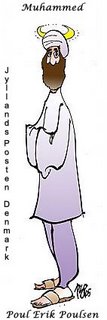
I Love The Idea Of My Wife
Do I love my wife? It's a complicated question. What is love? Perhaps it is an ineffable aspect of the human condition that can never be fully understood. It's like asking if I love my car or my golf clubs. I love them, but it's not like I love them. I certainly love owning them, and if either should ever be stolen, or somehow ruined, or damaged by someone's incompetence, I'd want to replace them immediately, and press full charges against the perpetrators.
I love the stability of my wife. I like knowing that she's there, sort of like how you feel about a good life-insurance policy or new luxury storm windows in the den. It's like having the high-end weed-whacker in the garage. It's good to see it and know it's there, even if I don't use it more than twice a year. My wife is like that. I love that about her.
It's reassuring to have the whole "wife" aspect of my lifestyle taken care of and done with, and know that it's not going to be disrupted. So in that sense, yes, I love her, but I suppose you could say I love the idea of her, as a concept, mainly, more than her specifically. But it's a good question, to be sure. It makes you think.
I enjoy life. You might even say I love it. And since my wife, or the idea of my wife, anyway, is part of that life, that's not going to change.
On the one hand, of course I love her. Don't get me wrong—we're talking about my wife. This is the mother of my children, the woman I plan to grow old with, the woman for whom I purchased a fine and beautiful home. But then again, if she happened to be some other, similar woman, it probably wouldn't be that much different. We'd still live in the same type of neighborhood, own the same cars, and have the same children. Well, they'd be genetically different children by 50 percent, but they'd probably serve basically the same function in my life.
She'd probably spend about the same amount of my income on largely the same things, and I assume we'd still attend the same parties and go to the same country club. I suppose it's possible we might have different hobbies. But we'd have the same holidays, certainly. I know we'd have the same attorney. She'd definitely have the same hair.
It's an eternal question, this mystery of "What is love, after all?" I can say this much: I can't imagine being without her, or someone like her. She's the person I've shared my life with. I'd really hate to lose her in some sort of a hypothetical divorce or unexpected-death scenario. That would be a living nightmare to deal with. If that counts as love, then yes, I love my wife very deeply.
I've been with my wife for more than 20 years. That's a lot of time to put into a long-term investment.
I've grown used to her. I'm comfortable with her. Frankly, I'd be lost without her. But I guess I'd feel that way about pretty much anybody who was from the same age group, economic tier, and level of education, and who I happened to marry 20-odd years ago, back when it was time to acquire a wife.
If she died, would I miss her? Certainly. Do I appreciate her presence in my home? Without a doubt. Is she the most important person in my life? In a way. But if she were to somehow magically disappear and be replaced one day by a near-duplicate, would that matter all that much to me? I'd have to say no.
- http://www.theonion.com/content/node/44917
















